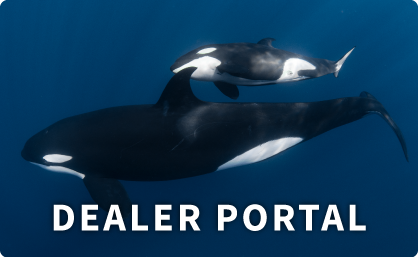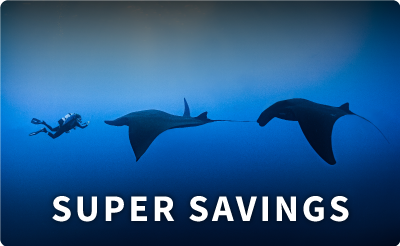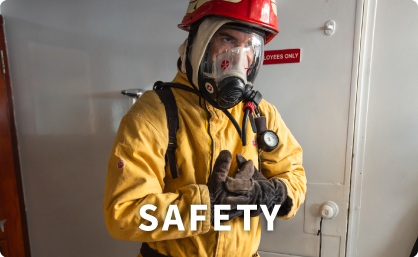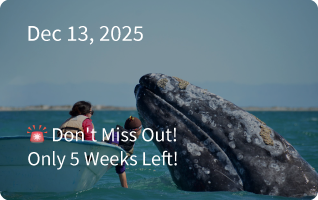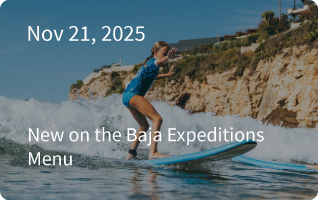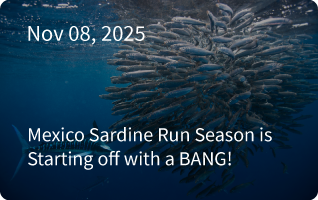Location: At anchor, south side, Clipperton Atoll, Republic of France.
Comments: Day 1 at Clipperton Island!! We sighted the coral atoll at 0615 and the excitement onboard continued building as we approached the island. We are completely alone in the middle of nowhere save for one 1200 ton tuna clipper anchored offshore.
I spoke with the Captain of the clipper by radio. He was very friendly and reported that he was waiting for the tuna to show up. He also mentioned that they saw a lot of sharks a couple of days ago and that there are huge numbers of spiny lobsters on the north side of the atoll. Hmmm. My first order of business was to carefully circumnavigate the 2.2-mile island to get a feeling for the bottom topography.
It was very busy in the wheelhouse with 2 lookouts, 1 person on the depth sounder full time, 1 person on the radar, 1 person tracking and recording all the depths and points of interest on the electronic plotter, 1 cinematographer recording everything for posterity and of course myself, driving the boat around and having fun. Well, it was fun except for the time that the bottom went from 300 feet to 40 feet NOW and I had to do a crash stop and hard jink to starboard.
Today was forecast to have the calmest seas of the week and we decided it would be our best chance to investigate the barrier reef and inner lagoon. We were not authorized to go ashore by the French authorities but felt that we could get a very good taste of the place from the reef.
It was incredibly exciting to actually sight the famous orange land crabs of Clipperton Island. There are reportedly 5 million crabs on the atoll and they are everywhere. I can’t decide whether they are creepy and evil or cute. The crabs are incredibly tenacious and relentless in looking for food. I read a very interesting report from the 1958 Scripps expedition (“The birds of Clipperton Island, Eastern Pacific” by Kenneth E. Stager, September 1964) in which the author describes the atoll as being lush and green with over 50 pigs running wild, very few crabs on the island and huge pressure on the bird population. The pigs, of course, were descendants from stock left behind by sailors/pirates/explorers from hundreds of years ago. So the author took it upon himself to shoot all the pigs and help restore Clipperton to its natural equilibrium. I can only guess that the crabs that survived the pigs were wily, tough and smart and that the crabs that we now see are a much hardier genetic strain than years ago. I’m also very puzzled as to why they would evolve as bright orange – what benefit is there?
The air mass here is very humid and very unstable. There were towering cumulous thunderstorms building at 0800 in the morning with cloud bases only 500 feet off the water. The upshot is that we have had very heavy rain showers all day long. As soon as the rain starts, the beach turns orange as all the crabs come out of their burrows. It is very cool to see.
Clipperton Island also has the largest colony of booby birds (gannets) anywhere in the world with 5 different species; browns and masked boobies (very common) as well as Galapagos, red-footed and blues (I think I got that right, I’m not great on my birding). To our surprise we also spotted ducks and even some Canadian geese. I definitely did not expect to find Canadian geese on Clipperton Island!
I was also surprised by the number of coconut palm groves on the atoll. American guano (phosphate) miners in the late 19th century reportedly planted the first coconut trees here and now there are stands of them all over Clipperton. In fact, the island is much lusher and greener than I expected and really seems like a tropical paradise. The only downside today was an unfortunate encounter between our inflatable and a large breaker on top of the reef… More to follow!
–Captain Mike
Weather: Hot and humid, air temperature 93°F, thunderstorms with heavy rain shower and wind, beautiful hot sunshine and calm winds, low swell from the northwest.
Water: Water temperature of 86°F, visibility 100 feet.

